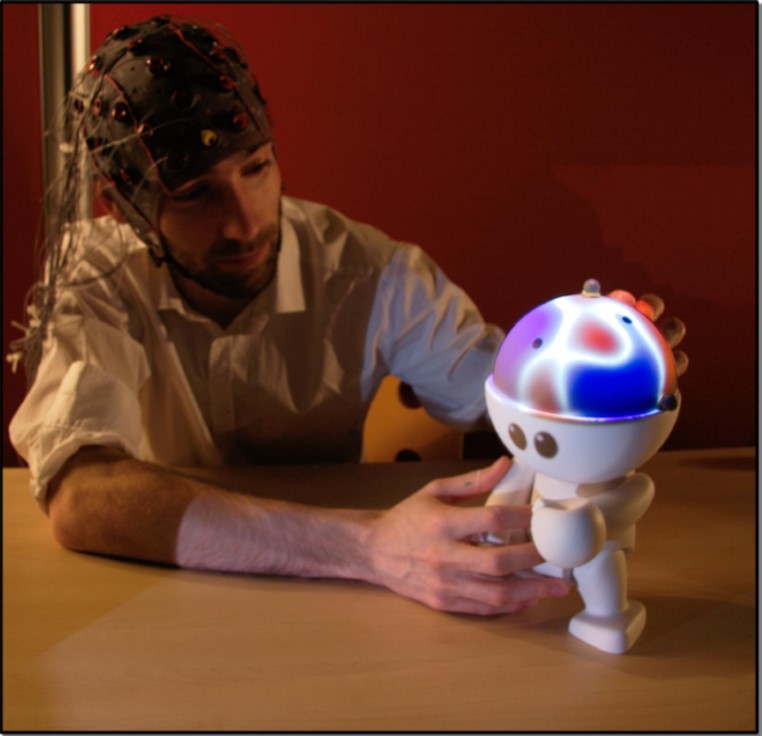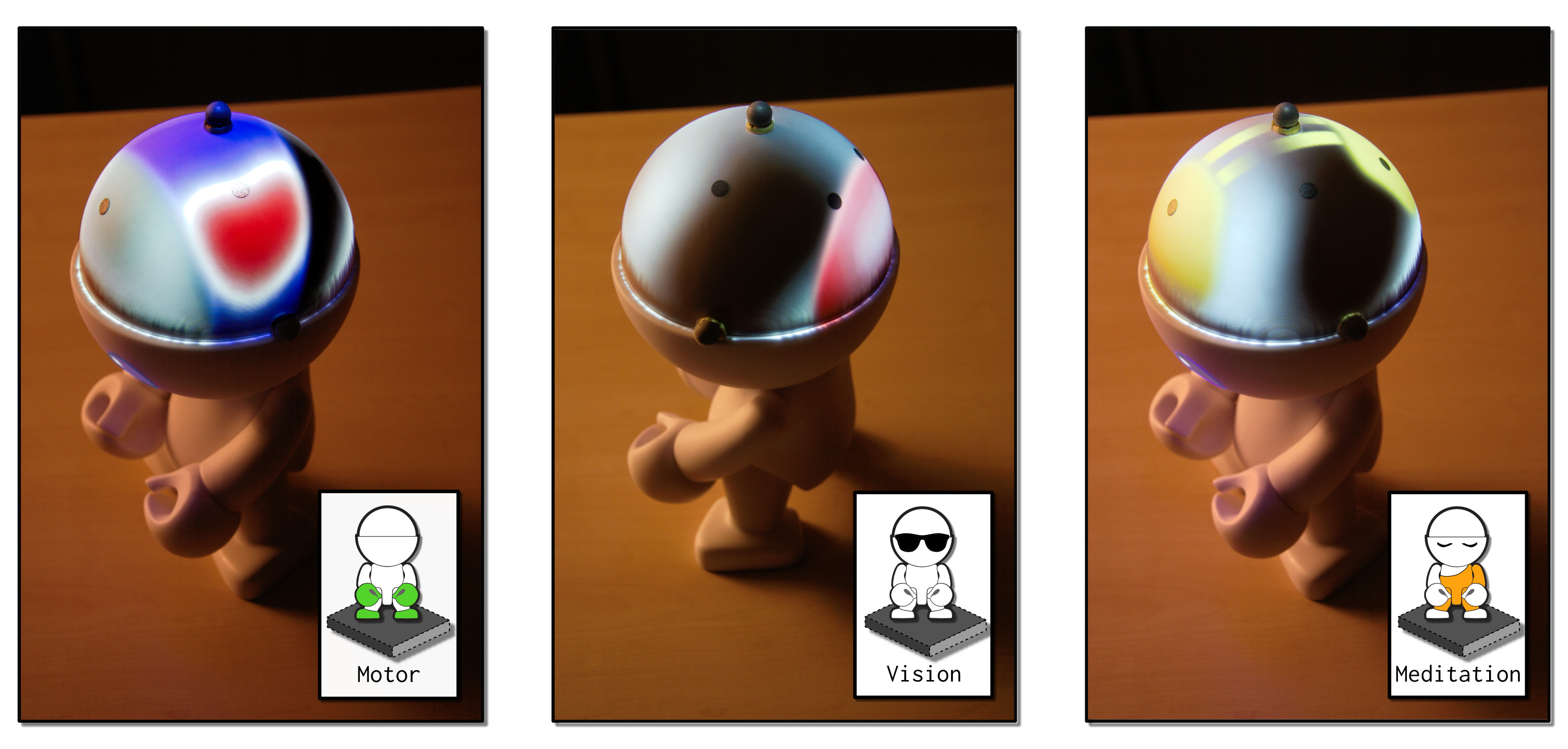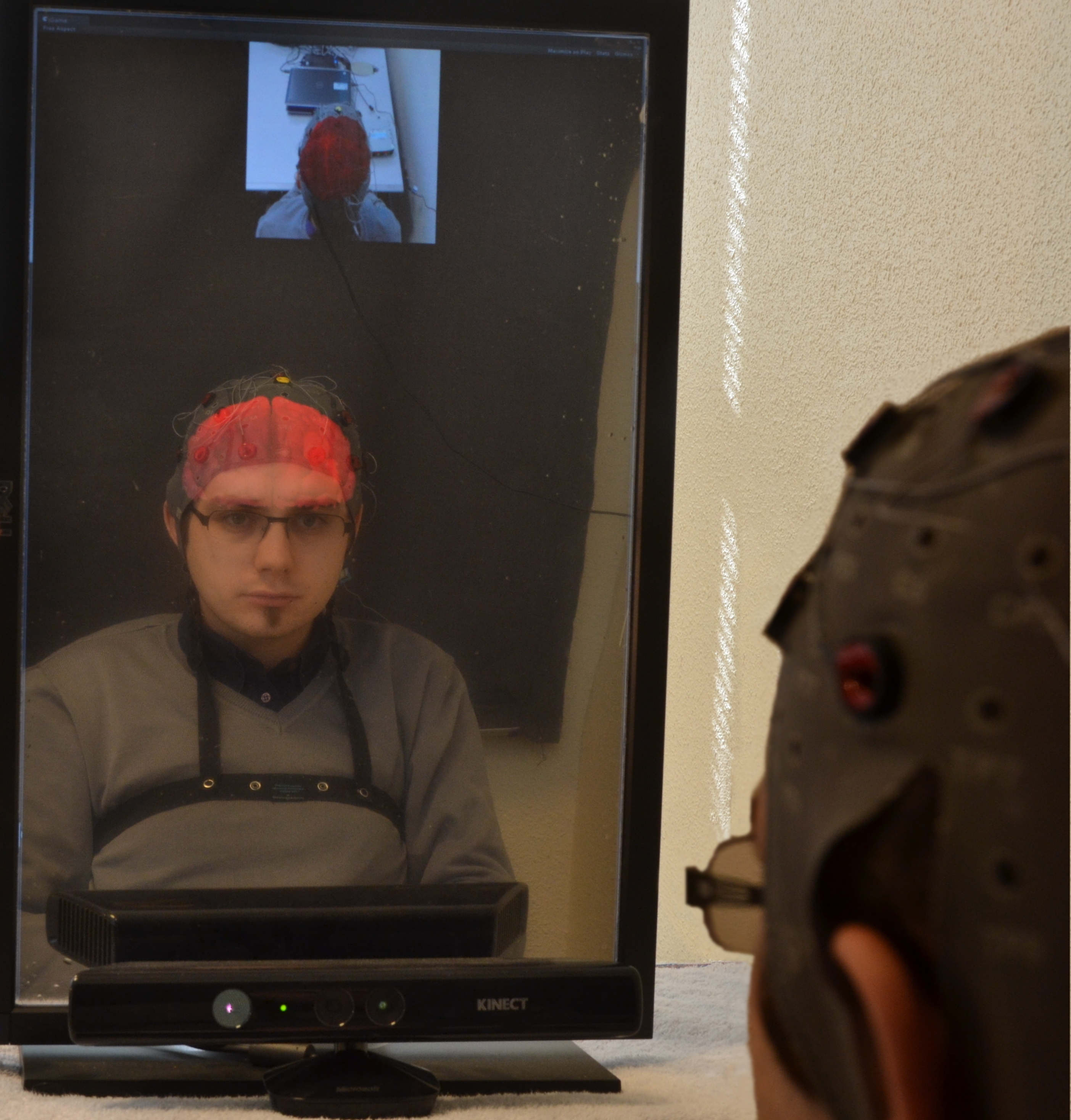Section: New Results
Teegi -Tangible EEG Interface- and MindMirror for interactive visualization of brain activities
Participants : Jérémy Frey, Renaud Gervais, Fabien Lotte, Martin Hachet.
Typical brain activity visualization tools are usually hard to understand and interpret for novice users. With advances in neurotechnologies (notably BCI) and HCI/AR, we explored the design of new ways to visualize our own brain activity in real-time, for which we proposed two new systems.
We designed Teegi, a Tangible EEG Interface that enables novice users to get to know more about something as complex as brain signals, in an easy, engaging and informative way [15] . To this end, we have designed a new system based on a unique combination of spatial augmented reality, tangible interaction and real-time neurotechnologies (see Figure 5 ). With Teegi, a user can visualize and analyze his or her own brain activity in real-time, on a tangible character that can be easily manipulated, and with which it is possible to interact. Users can also reveal some specific EEG phenomenons (e.g., sensorimotor rhythms) still using a tangible approach by placing dedicated "mini-teegi" (small pupets) in a designated area on the interaction zone. The whole system has been designed with educational psychology tools in mind to ensure an efficient learning. An explorative study has shown that interacting with Teegi seems to be easy, motivating, reliable and informative. Overall, this suggests that Teegi is a promising and relevant training and mediation tool for the general public.
In addition, together with colleagues from Inria Rennes (team Hybrid), we introduced a novel augmented reality paradigm called ”the Mind-Mirror” which enables such an experience of seeing ”through your own head”, visualizing your brain ”in action and in-situ” [23] . Our approach relies on the use of a semi-transparent mirror positioned in front of a computer screen. A virtual brain is displayed on screen and automatically follows the head movements thanks to an optical face-tracking system. The brain activity is extracted and processed in real-time thanks to an EEG cap wore by the user. A rear view is also proposed thanks to an additional web-cam recording the rear of user’s head (see Figure 6 ).





